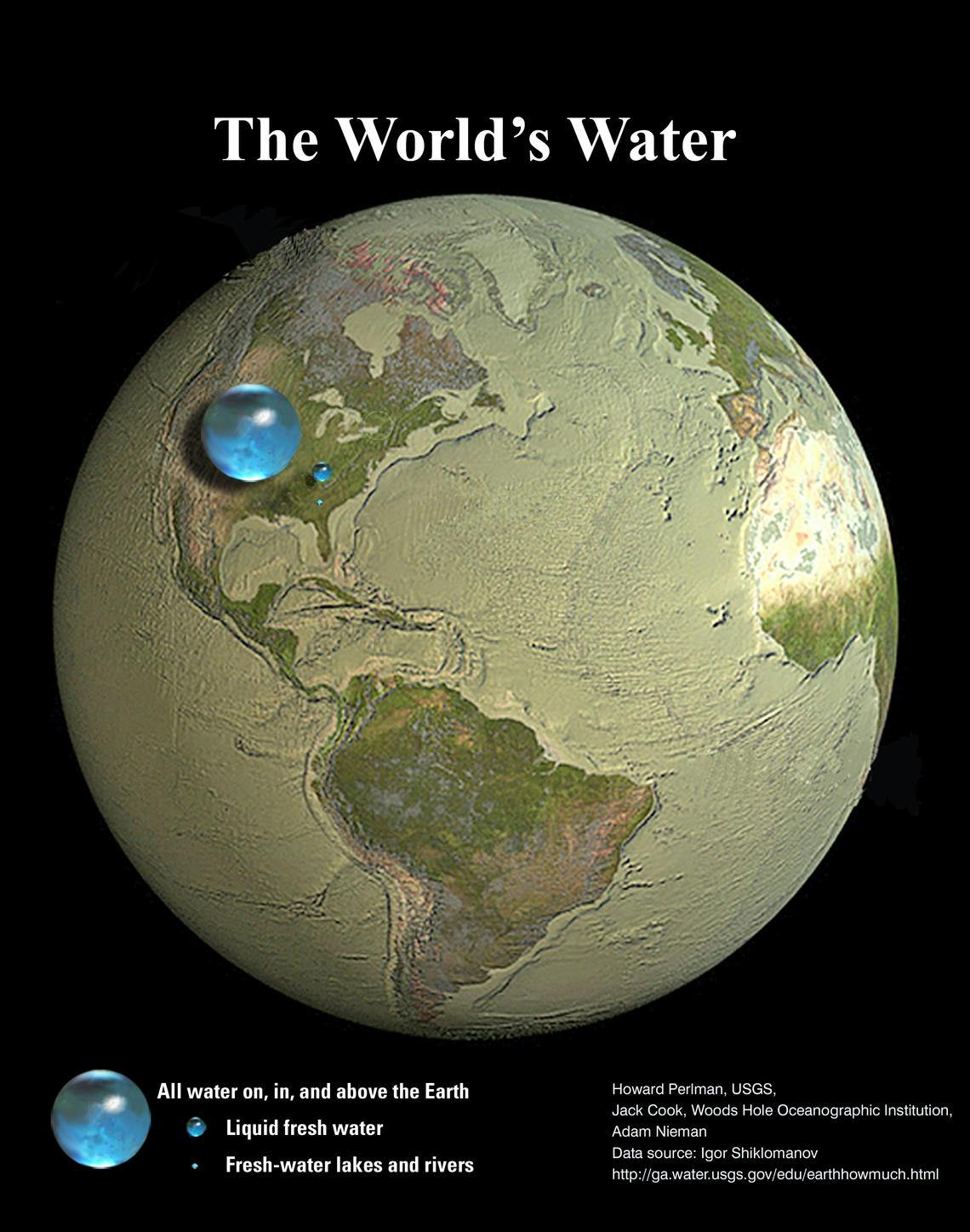Water Wednesday - Available Fresh Water
Category: Engineering
Written By: Keith Rutherford, PE
Date: March 31, 2021

 Keith Rutherford, PE, is a Principal and a Senior Project Manager for Parkhill’s Treatment Practice. He has served as president of the local chapter for the American Society of Civil Engineers (ASCE), vice president – technical for the Texas section of ASCE, and as a project advisory committee member for the Water Reuse Foundation.
Keith Rutherford, PE, is a Principal and a Senior Project Manager for Parkhill’s Treatment Practice. He has served as president of the local chapter for the American Society of Civil Engineers (ASCE), vice president – technical for the Texas section of ASCE, and as a project advisory committee member for the Water Reuse Foundation.
According to the U.S. Geological Survey (USGS), 71% of the earth’s surface is covered with water. Looking at a globe, it is easy to see that most of this is in the world’s oceans. In fact, 96.5% of the water is contained in the oceans leaving 3.5% in glaciers, rivers, lakes, and aquifers. If you were to collect all the water on and around the earth and gather it into a sphere it would be about 860 miles in diameter. Soley freshwater would create a sphere 170 miles in diameter. Finally taking out the freshwater that is visible in lakes and rivers makes a sphere 35 miles in diameter. The water left in the original bubble is what is contained in glaciers, aquifers, and the atmosphere. The majority is contained in glaciers and the polar ice caps. This graphic from the USGS illustrates this concept.
The water cycle we all learned about in grade school showed a circular cycle with evaporation, condensation and precipitation. In areas of the arid southwest, we don’t get much precipitation, but we have high evaporation rates. The water we pull from the ground to drink and use in our daily lives is treated and discharged to a lake or a stream or in some cases spread out on the ground to water crops, evaporate and percolate. Most of this water doesn’t ever get back to the aquifer source, so our fresh groundwater sources become depleted. Other sources may be brackish and need to be treated before using them.
 Technology is available that can turn the most brackish groundwater or saline ocean water into drinking water but there are large cost impacts to doing this. What do you do with the salt (brine) that is removed from the brackish groundwater or seawater? The brine from brackish desalting can be put in evaporation ponds or injected back into brackish aquifers where the water in the aquifer is more saline than the brine. Both are very expensive options when compared to treating freshwater. In areas where seawater desalting is used for drinking water, the brine is returned to the ocean. This concentrated brine raises the salinity of the ocean water and over time (a long time) the salinity will increase to a point where the salt can’t be dissolved in the water anymore and precipitate out. The increased salinity will likely impact the sea life at some point as well.
Technology is available that can turn the most brackish groundwater or saline ocean water into drinking water but there are large cost impacts to doing this. What do you do with the salt (brine) that is removed from the brackish groundwater or seawater? The brine from brackish desalting can be put in evaporation ponds or injected back into brackish aquifers where the water in the aquifer is more saline than the brine. Both are very expensive options when compared to treating freshwater. In areas where seawater desalting is used for drinking water, the brine is returned to the ocean. This concentrated brine raises the salinity of the ocean water and over time (a long time) the salinity will increase to a point where the salt can’t be dissolved in the water anymore and precipitate out. The increased salinity will likely impact the sea life at some point as well.
The truth is, we are not running out of water, we are running out of affordable water!


